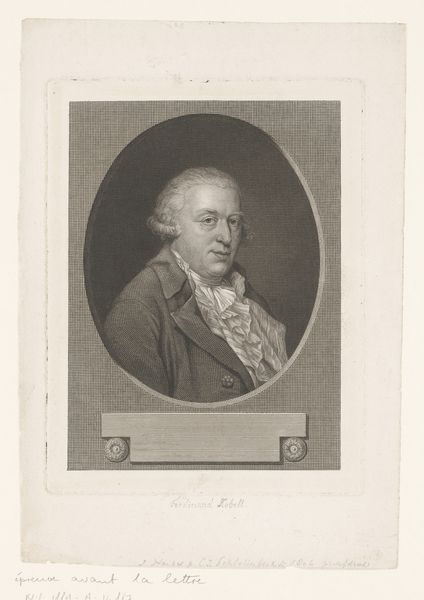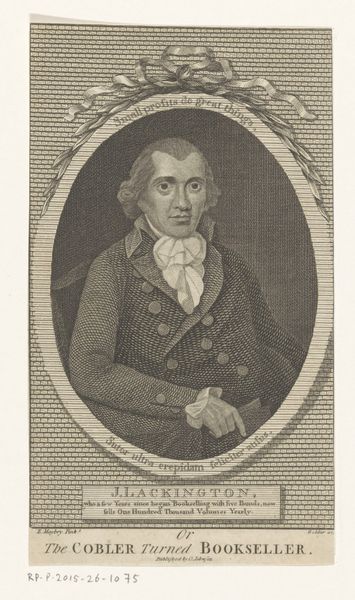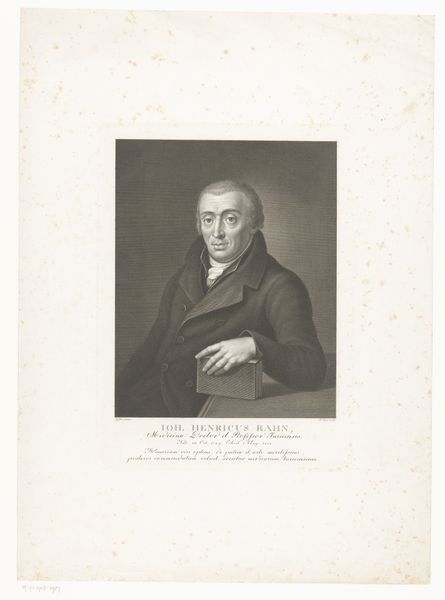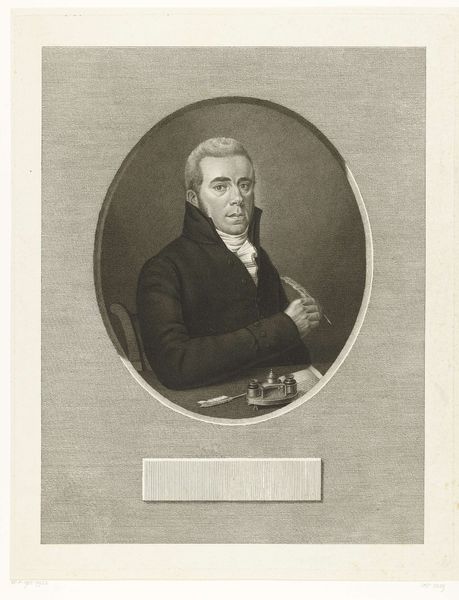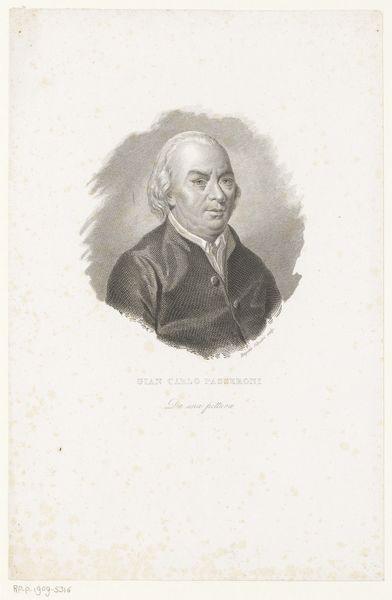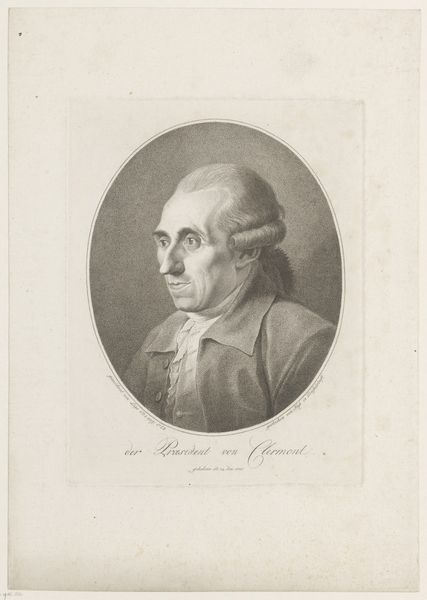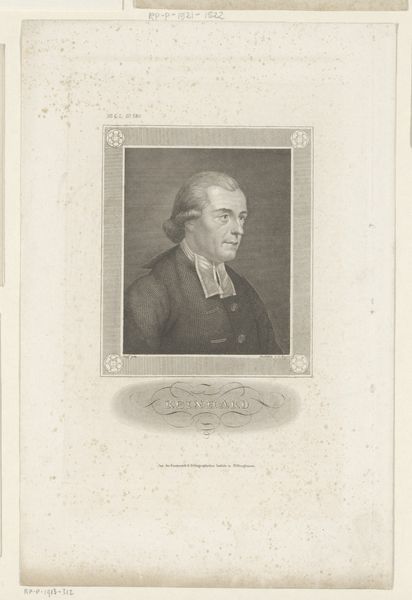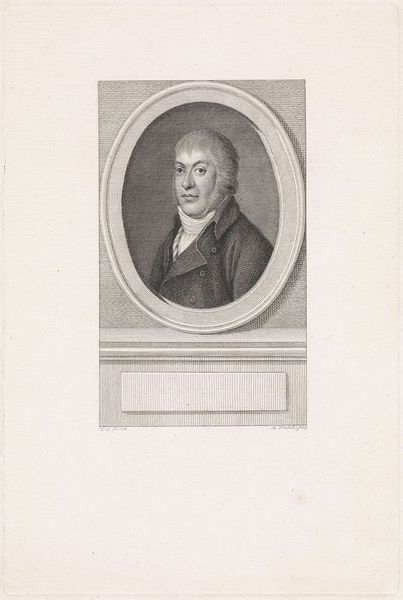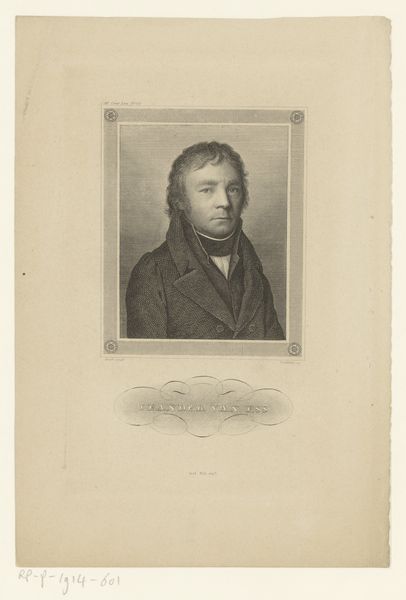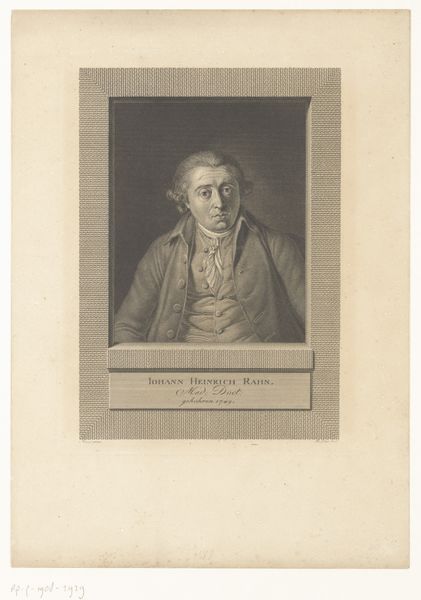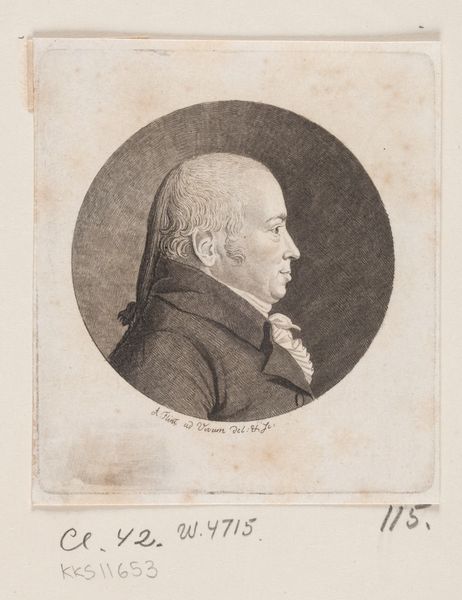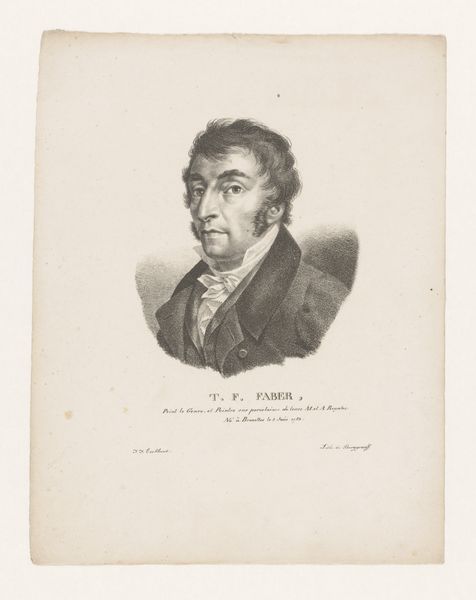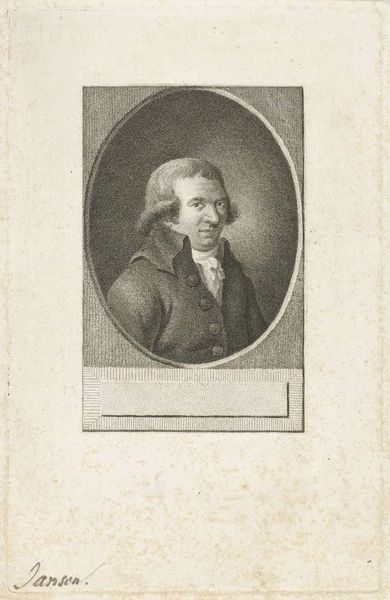
Portret van de dichter en predikant Reinier Pieter van de Kasteele 1804
0:00
0:00
print, engraving
#
portrait
#
neoclacissism
# print
#
19th century
#
history-painting
#
engraving
Dimensions: height 213 mm, width 155 mm
Copyright: Rijks Museum: Open Domain
Editor: So, here we have "Portret van de dichter en predikant Reinier Pieter van de Kasteele" which translates to "Portrait of the poet and reverend Reinier Pieter van de Kasteele," an engraving done in 1804 by Charles Howard Hodges. It’s got this really serene, almost austere quality to it. What strikes you when you look at this piece? Curator: What I immediately notice is the fascinating interplay between the individual and the socio-political forces at play in the early 19th century. Hodges captures van de Kasteele in this Neoclassical style, harking back to a perceived "golden age" of order and reason. Given that he was both a poet *and* a preacher, how might this image have functioned publicly? Editor: Good question! I suppose it's trying to present him as this figure of enlightenment and moral authority. The engraving would have been distributed pretty widely, right? To promote his image? Curator: Precisely. Prints like this served as vital tools for shaping public perception, particularly for individuals in positions of influence. The restrained style, devoid of excessive ornamentation, speaks volumes about the values the sitter, and by extension the artist, wished to project to Dutch society. Does it strike you as being overtly propagandistic, or something else entirely? Editor: Well, propagandistic might be too strong. It feels more like... carefully constructed self-presentation. Almost like an early form of carefully curated branding, projecting an image of dignified leadership. It really makes you consider the intended audience. Curator: Absolutely. And the placement of the text beneath, mimicking an inscription, further reinforces the idea of enshrining his legacy within the cultural landscape. Think about where these images would circulate - in books, pamphlets, displayed in homes - reinforcing this idea of the ideal citizen. Editor: I never thought about how the print itself is acting like a little monument! This conversation gave me a completely new perspective on the power of even seemingly simple portraiture. Curator: And it is a potent reminder that art never exists in a vacuum; its power comes from how it participates in a larger societal dialogue.
Comments
No comments
Be the first to comment and join the conversation on the ultimate creative platform.
